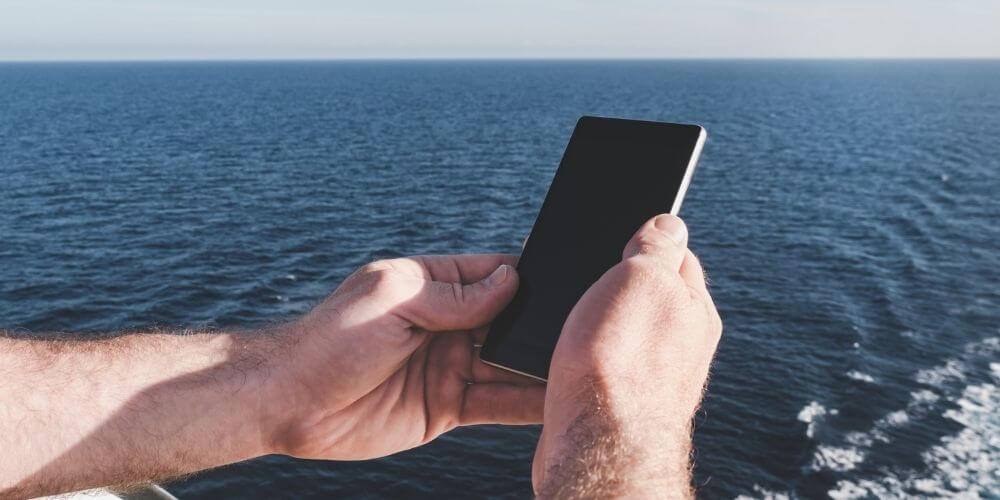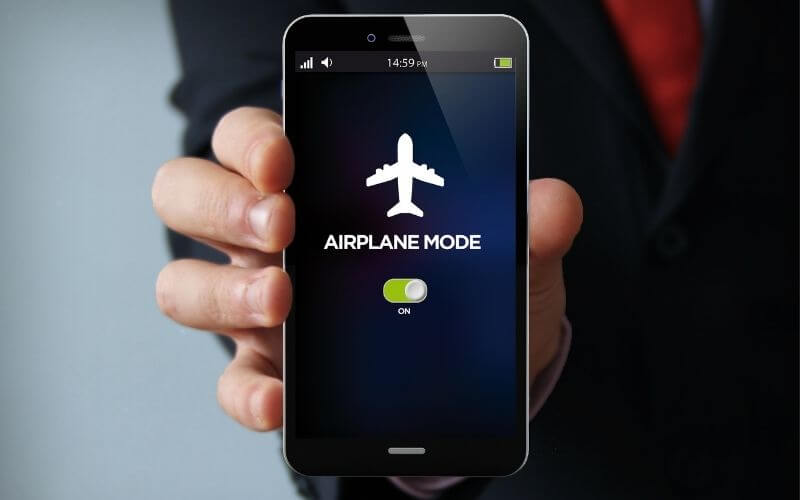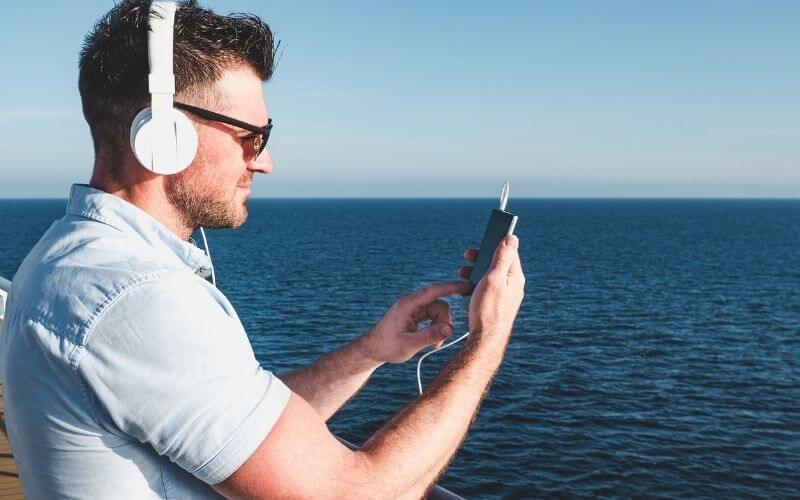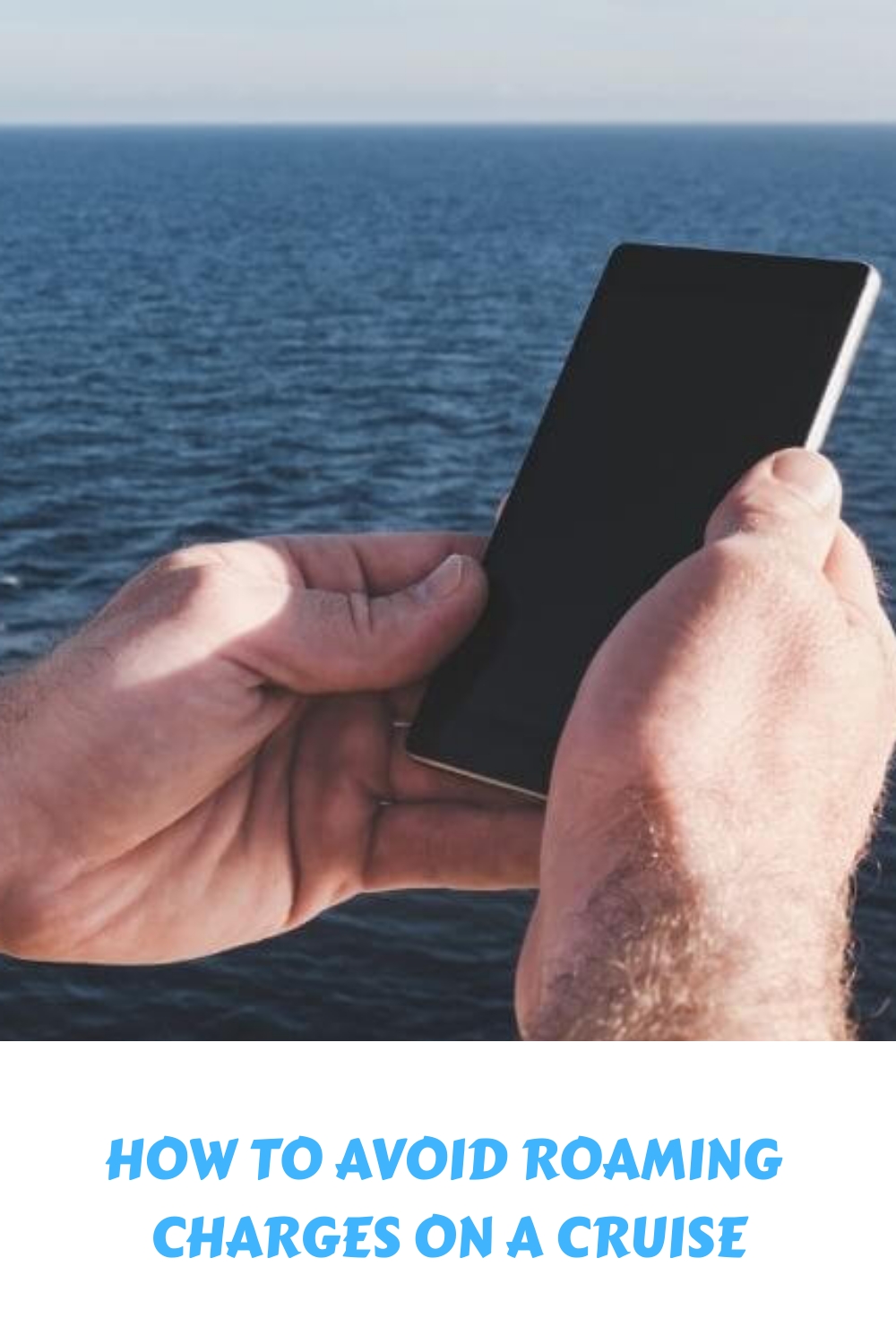Using your mobile phone while travelling is something that is second nature to many of us. But, when you’re cruising, using your phone can lead to HUGE charges for mobile data roaming at sea.

This is even true if you don’t actually use your phone, but just leave it switched on. Certain apps can run in the background without you knowing, continually refreshing and using your mobile data at sea.
Read on to find out how to avoid a surprise phone bill after your cruise…
Roaming charges explained
Roaming refers to when you use your phone abroad. You’re classed as ‘roaming’ when your phone uses a foreign network that’s different to your normal provider.
Roaming regulations mean that those who choose to use their phone abroad are applicable for roaming charges, and the amount will vary depending on your mobile network. Data roaming refers to internet connections specifically, though roaming also applies to calls and SMS.
Whether you’re opting to use your phone to keep in touch back home or to post your latest food snaps online, it’s worth noting what your network charging rates are before you go abroad.

The cost of using your phone on a cruise
Roaming costs are entirely down to your network’s charges and dependent on your mobile phone provider. From January 2021, when Brexit officially came into action, the rules on data roaming and charges changed.
Since Brexit, UK mobile users no longer automatically enjoy free roaming in the EU. Many providers still included roaming in Europe at no extra cost, but, it’s still wise to inform your network provider to check your destination is covered so you don’t receive any charges.
Roaming costs at sea
When cruising, you’re constantly changing location. Most of the time you’re at sea – whether travelling between ports or crossing an ocean. This is when mobile data roaming can get very expensive as your phone will connect to the maritime network rather than the typical satellites it would connect to while on land.
Your data roaming costs will be incurred by making calls, sending texts, and using data. Fees can be charged per day, per minute charge or even for each chunk of data used.
Some people have truly been caught out by this, thinking that the data roaming charges will be the same on a cruise ship as it is on land. One man from Yorkshire paid extra for a bolt-on roaming package but was still hit with a bill for £340 after his phone connected to the maritime network.
An American lady paid for the ship’s WiFi package as well as an international roaming plan and still got stung with a $2,700 bill. Another unfortunate family got hit by a bill for €12,000 after their 12-year-old son watched some videos while on a cruise to Norway – that’s some hefty maritime network charges for the sake of a bit of boredom!

If you’re looking to avoid data roaming charges altogether, solutions like GigSky provide convenient eSIM data plans tailored for travellers. Click here to visit GigSky and use the discount code CRUISEMUMMY10 for a 10% discount on your plan.
Why cruise roaming costs so much more than on land
While at sea, your phone signal comes through an at-sea provider known as a maritime network. As there are no mobile phone masts at sea, the signal must instead use satellites.
Launching satellites into space is very expensive. The high demand for satellite communication and the limited amount of data that needs to be transmitted means that there is a high cost associated with using WiFi at sea.
If you’re interested in the technical details of how the maritime network works, you can read more about it in this article.

Top tips to prevent roaming charges at sea
Thankfully, there are a few ways in which you can prevent maritime network roaming charges during a cruise.
1. Turn off your phone
The easiest, but by no means the nicest, is to turn off your phone. Pop it in the safe until you reach a port where you can access the network of the country you visit or – better yet – wait until you get home!
2. Use airplane mode
Many of us can’t go more than a few hours without our phones, so it’s more likely you will opt for these other options such as using airplane mode.
Airplane mode (also known as flight mode) simply turns off all data access for your phone, but you can still use it as a device to set alarms or take photos.

3. Use the ship’s WiFi
If you still want to make phone calls, read and respond to text messages, surf the internet and update social media, you should use the ship’s WiFi.
Most cruise lines have WiFi packages either for hourly, daily or unlimited access while at sea. WiFi packages vary by the cruise line and can be pre-paid or added while you’re on the ship.
TODAY’S BEST CRUISE DEALS!
Don’t miss these offers…
The main point to remember…
The key to avoiding data roaming charges on a cruise is always to have your phone on airplane mode as soon as the ship leaves port, whether you use the ship’s WiFi or not. This is the best way to avoid maritime data charges.
As soon as the ship gets a few hundred metres from the coast, your phone could connect to the maritime network and begin racking up charges, even if you’re not actively using it. If someone sends you an email and your phone automatically downloads that, you’ll be billed for it.

Alternatives to calls and text messaging on a cruise
If you have a WiFi package on your cruise, you may not be able to use it to make regular telephone calls and send text messages. But, there are some alternatives you can use…
WhatsApp is a great option as it allows instant messaging, including photos and videos, alongside video and audio calls – it works just like a normal call but can be done via wifi.
Skype works much the same, though this is mainly used as a video call application. Facetime is another option that works similarly for iPhone users.
Some people even use walkie-talkies to communicate with their family members on a cruise. Teenagers and older kids particularly like this option as it can be quite fun.
There are many other options to choose from – Just make sure to let those at home know which one to use to keep in touch.
If you want to know how to send text messages for free on your cruise, there are a few different ways to do it. I have a full guide to that here: How to Text on a Cruise Ship for Free.
The bottom line
While data maritime roaming charges sound scary and can rack up a huge bill, as long as you know the steps to prevent it, there are ways you can still enjoy uploading your favourite snaps and calling your family back home.
The key thing to remember is that you never want your phone to connect to the maritime network. Keep it on airplane mode while at sea and if you want to use it for calls, messages, or internet access you should buy a wifi package.
You should also check your network provider’s costs for roaming charges while on land. If these are free in your cruise destinations, you might opt to only use your phone while the ship is in port.
Some providers will also let you set limits for roaming use before you travel, so while you might still be charged a lot for your O2 or Vodafone cruise ship roaming, you can at least control it a little.
Whatever you decide, it’s good to have a plan before you go, whether that includes paying wifi while on board or having a digital detox altogether.
Related posts:
- 3 Ways To Get Free Wifi On Your Royal Caribbean Cruise
- P&O Cruises Wifi: Costs & How To Buy
- How to Text on a Cruise Ship for Free
- Does Tinder Work On Cruise Ships?
- Is The AT&T Cruise Package Worth It?

Jenni Fielding is the founder of Cruise Mummy. She has worked in the cruise industry since 2015 and has taken over 30 cruises. Now, she helps over 1 million people per month to plan their perfect cruise holidays.



I recommend also ensuring you have a spending cap applied to your mobile contract. I don’t usually spend much on calls generally wherever I am so I have set the cap to £30. This means that even if I forget to do any of the sensible things above to avoid high charges, the most my bill should be is £30 in any one month.
On O2, for example, you can set your own spending cap by logging in at O2.co.uk, then clicking “Manage Spend Cap”. This has saved us a couple of times.
That’s a great tip! Thanks for sharing.
Jenni,
You can often download data for ‘free’ whilst at a cafe/bar when ashore. A good guide is noticing where off-duty crew members congregate.
‘Fitbit’ users may find that their watches don’t change time zones if their phones are on airplane mode whilst onboard and when onshore you don’t want to be late returning to the ship!
Is walkie Talkie actually allowed onboard?
Yes. You can bring a walkie-talkie on a cruise. They don’t all work with so much metal. but these ones do: https://www.cruisemummy.co.uk/the-best-walkie-talkies-for-cruise-ships/